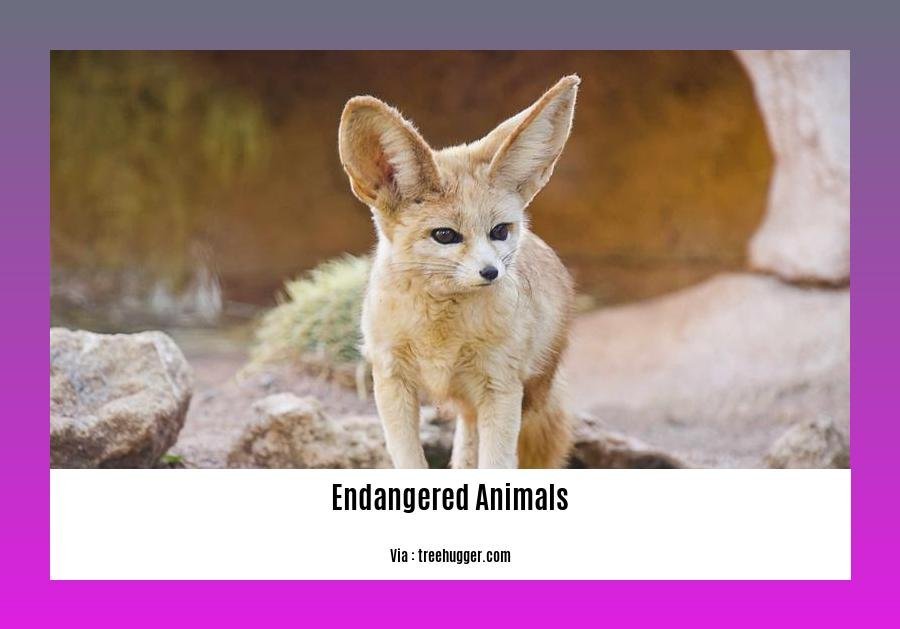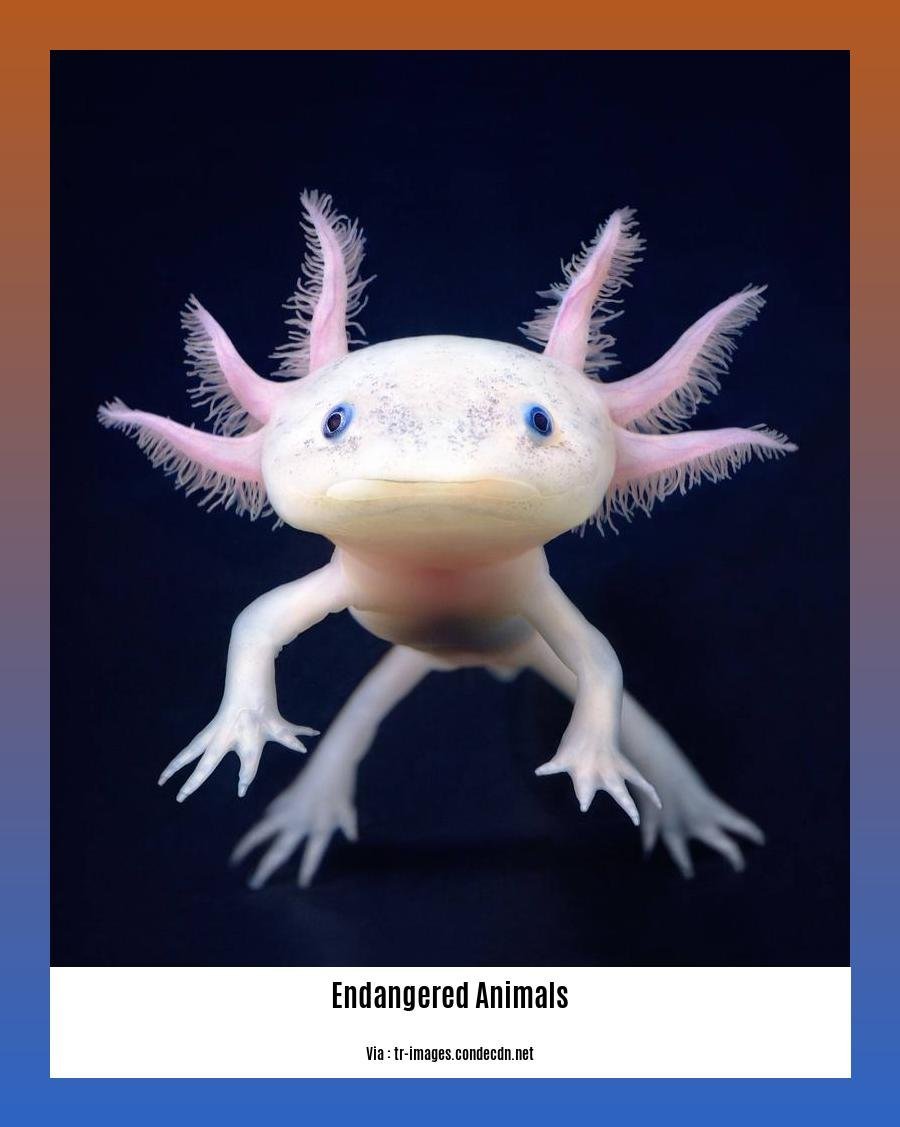Protecting and Restoring the Endangered Animals and Birds in India: A Call for Conservation
India, with its diverse landscapes and thriving ecosystems, is home to a multitude of rare and endangered animals and birds. However, the rapid loss of habitat, poaching, and climate change pose significant threats to their survival. In this article, we delve into the list of 11 critically endangered birds and endangered animals in India pdf, as well as the top 10 endangered animals and birds in the country. With a focus on conservation efforts, we aim to raise awareness about the urgent need to protect and restore their habitats. Together, we can make a difference and ensure the preservation of these precious species for future generations.
Key Takeaways:
– Bengal Tigers, Asiatic Lions, Snow Leopards, One-horned Rhinoceros, Blackbucks, Lion-tailed Macaques, Resplendent Tree Frogs, Kashmiri Red Stags, Red Pandas, Nilgiri Tahrs, and Indian Bisons are some of the endangered species in India.
– These species are threatened by habitat loss, poaching, climate change, and human activities.
– Protection of habitats, strict anti-poaching measures, and community involvement are crucial for their survival.
– Conservation efforts such as habitat restoration, captive breeding programs, and public awareness campaigns are being implemented.
– Cooperation between the government, NGOs, and society is essential for preserving India’s rich biodiversity and ensuring the survival of these species.
Protecting and Restoring the Endangered Animals and Birds in India

India’s rich biodiversity is home to a stunning array of endangered animals and birds. These magnificent creatures face numerous threats to their survival, including habitat loss, poaching, climate change, and human activities. It is crucial for us to understand the importance of protecting and restoring their habitats and take immediate action to ensure their survival. In this article, we will explore some of the endangered species found in India and discuss the urgent need for conservation.
Bengal Tiger: A Majestic Species in Peril
The Bengal Tiger, a symbol of strength and beauty, is one of the most endangered species in India. With only a fraction of their population remaining, these magnificent big cats face constant threats. Habitat loss, poaching for their valuable body parts, and conflicts with humans are pushing them to the brink of extinction. To safeguard their future, it is essential to protect their habitats and implement strict measures to combat poaching. Our collective efforts can bring hope for the survival of this majestic species.
Asiatic Lion: Preserving an Iconic Species
The Asiatic Lion, once on the verge of extinction, is another critically endangered species in India. With their last stronghold in the Gir Forest National Park, these majestic lions have seen their population decline due to hunting and habitat loss. Conservation efforts, including protected areas and anti-poaching measures, have helped stabilize their population. However, ongoing efforts are crucial to ensure their long-term survival. By actively supporting conservation initiatives, we can be the protectors of this iconic species.
Snow Leopard: Guardians of the Himalayas
The elusive and majestic Snow Leopard roams the high-altitude regions of the Himalayas. Like a ghost in the mountains, this endangered species faces threats from habitat degradation, illegal hunting, and the impacts of climate change. Efforts are being made to protect their habitats, raise awareness, and promote community-based conservation initiatives. By understanding their ecological needs and behavior, we can ensure the future of this magnificent cat in its mountain kingdom.
One-horned Rhinoceros: Pride of the Northeast
The One-horned Rhinoceros, also known as the Indian Rhinoceros, is found in the northeastern region of India. Once pushed to the brink of extinction due to poaching for its horn and habitat loss, this iconic species has seen a remarkable recovery. Strict anti-poaching measures, habitat conservation, and community involvement have contributed to the revival of their population. Yet, continuous efforts are vital to secure their long-term survival. Let us stand as guardians of this mighty creature’s habitat.
Blackbuck: Graceful and Endangered
The Blackbuck, a graceful antelope species native to the Indian subcontinent, faces endangerment due to habitat destruction, poaching, and competition with livestock. Conservation efforts involving protected areas and community-based initiatives have played a vital role in their recovery. However, sustained conservation efforts are necessary to mitigate the threats they face and preserve their grace for future generations.
Lion-tailed Macaque: A Precious Primate
Endemic to the rainforests of the Western Ghats in India, the Lion-tailed Macaque is one of the most endangered primates in the world. Habitat loss, fragmentation, and illegal wildlife trade pose significant threats to their survival. Protecting their habitats, launching awareness campaigns, and conducting research to understand their ecological needs and behavior are imperative to secure their future.
Resplendent Tree Frog: Beauty Under Threat
The Resplendent Tree Frog, found in the Western Ghats of India, is an endangered amphibian species. Habitat loss, pollution, and climate change are major threats to their survival. Efforts to restore their habitats, captive breeding programs, and public awareness campaigns can play a crucial role in promoting their conservation. Let us champion the protection of these enchanting creatures in their delicate ecosystems.
Kashmiri Red Stag: Saving a Majestic Deer
The Kashmiri Red Stag, also known as Hangul, is a critically endangered deer species found in the Dachigam National Park in Jammu and Kashmir, India. Habitat loss, poaching, and disturbance from livestock grazing have contributed to their decline. Conservation efforts focus on habitat restoration, anti-poaching measures, and community engagement, ensuring the preservation of this regal species.
Red Panda: Guardians of the Eastern Himalayas
The Red Panda, a unique and endangered species, inhabits the eastern Himalayas of India. Their survival is challenged by habitat loss, illegal poaching, and the impacts of climate change. By protecting their habitats, promoting sustainable tourism, and intensifying anti-poaching efforts, we can secure the future of these adorable creatures in their mountainous haven.
Nilgiri Tahr: Mountain Defenders
The Nilgiri Tahr, a mountain goat species endemic to the Western Ghats of India, faces endangerment due to habitat loss, poaching, and competition with domestic livestock. Protected areas, habitat restoration, and community-based conservation programs are vital to ensuring their long-term survival. Let us gather our efforts to protect these mighty mountain defenders.
Indian Bison: Safeguarding the Giants
The Indian Bison, also known as the Gaur, is one of the largest wild bovine species found in India. Their population is threatened by habitat loss, hunting, and disease transmission from domestic livestock. Protecting their habitats, intensifying anti-poaching efforts, and implementing sustainable management of human-wildlife conflicts are crucial steps in their conservation. Together, we can secure the future of these magnificent giants.
In conclusion, the endangered animals and birds in India face numerous threats to their survival. Protecting their habitats, combating poaching, raising awareness, and involving local communities in conservation efforts are essential for their long-term survival. By joining hands with government agencies, NGOs, and society as a whole, we can preserve India’s rich biodiversity and ensure the survival of these magnificent species for future generations. Let us act now, before it is too late.
Endangered animals in India are facing numerous challenges due to habitat destruction and poaching. If you want to learn more about the species that are at risk, check out our article on endangered animals in India. It’s a fascinating read that sheds light on the importance of conservation efforts in preserving our rich biodiversity.
South America is home to a wide variety of endangered plant species, and learning about them is truly eye-opening. Explore our article on endangered plants in South America to discover the unique and fragile ecosystems that these plants inhabit.
Meghalaya, a beautiful state in India, is not only known for its scenic landscapes but also for its diverse wildlife. Discover the incredible range of endangered species in Meghalaya by clicking on our article about endangered species in Meghalaya. It’s a journey that will leave you amazed and inspired to protect these vulnerable creatures.
Top 10 Endangered Animals In India

India, with its incredible biodiversity, is home to a rich variety of wildlife. Unfortunately, many of these unique species are now on the brink of extinction. It is crucial that we take immediate action to protect and restore the habitats of these endangered animals and birds. In this article, we will explore the top 10 endangered animals in India and shed light on the urgent need for conservation.
Asiatic Lion
The Asiatic Lion, also known as the Indian Lion, is one of India’s most iconic and endangered species. This magnificent creature can be found primarily in the Gir Forest National Park in Gujarat. The population of Asiatic Lions has faced severe decline in the past due to hunting and habitat loss. Conservation efforts, including protected areas and anti-poaching measures, have helped stabilize their population. However, continued efforts are needed to ensure their long-term survival.
Bengal Tiger
The Bengal Tiger is undoubtedly one of the most majestic creatures in the world, and it is sadly classified as endangered. India is home to a significant population of these tigers, with about 70% of the global population residing in the country. However, the Bengal Tiger faces various threats, including habitat loss, poaching for its valuable body parts, and conflicts with humans due to the encroachment of their habitats. Protecting their habitats and implementing strict measures to combat poaching are essential to safeguarding the survival of this incredible species.
Snow Leopard
The Snow Leopard is a highly elusive and endangered species that inhabits the mountainous regions of India. Known for its breathtaking beauty, the snow leopard is under threat due to habitat degradation, illegal hunting, and the impacts of climate change. Conserving their habitats, raising awareness, and promoting community-based conservation initiatives are essential to safeguard the future of this magnificent cat.
Black Buck
The Black Buck is a unique antelope species that is native to India. This elegant creature has witnessed a rapid decline in population due to habitat loss and illegal hunting. Conservation efforts involving protected areas and community-based initiatives have played a vital role in the recovery of their population. Continued conservation efforts are necessary to mitigate the threats they face and ensure their long-term survival.
Red Panda
The Red Panda, a small mammal that is primarily found in the eastern Himalayas, is critically endangered. This adorable creature faces multiple threats, including habitat destruction and illegal poaching. Efforts to protect their habitats, combat poaching, and raise awareness about their conservation are crucial to safeguarding their population.
One Horned Rhinoceros
The One Horned Rhinoceros, also known as the Indian Rhinoceros, is a large herbivorous mammal native to northeastern India. This magnificent creature is critically endangered due to habitat loss and poaching for its horn. Stricter anti-poaching measures, habitat conservation, and community involvement have contributed to the recovery of their population. However, continuous efforts are crucial to ensuring their long-term survival.
Kashmiri Red Stag
The Kashmiri Red Stag, also known as the Hangul, is a species of deer endemic to the Kashmir Valley. This unique and majestic creature is critically endangered due to habitat loss and poaching. Conservation efforts focus on habitat restoration, anti-poaching measures, and community engagement to protect these stunning creatures.
Lion Tailed Macaque
The Lion Tailed Macaque is a unique monkey species that is endemic to the Western Ghats of India. With its distinctive mane-like hair, this primate is critically endangered due to habitat loss and fragmentation. Protecting their habitats, conserving forested areas, and promoting awareness about their conservation are crucial to their survival.
Indian Bison
The Indian Bison, also known as the Gaur, is the largest extant bovine species in the world. It is primarily found in the Western Ghats and the Northeastern states of India. This remarkable creature is classified as vulnerable due to habitat loss, hunting, and disease transmission from domestic livestock. Conservation measures, including the protection of their habitats, anti-poaching efforts, and sustainable management of human-wildlife conflicts, are necessary to ensure their continued existence.
Nilgiri Tahr
The Nilgiri Tahr, a species of mountain goat endemic to the Western Ghats, is classified as endangered. This magnificent animal faces threats such as habitat loss and poaching. Conservation efforts involve the establishment of protected areas, habitat restoration, and community-based conservation programs to ensure their long-term survival.
Key Takeaways:
- The Asiatic Lion, Bengal Tiger, and Snow Leopard are among the most endangered animals in India, facing threats such as habitat loss and poaching.
- Other endangered species in India include the Black Buck, Red Panda, One Horned Rhinoceros, Kashmiri Red Stag, Lion Tailed Macaque, Indian Bison, and Nilgiri Tahr.
- Conservation efforts play a crucial role in protecting these endangered animals and birds, including the preservation of their habitats, anti-poaching measures, and community involvement.
- It is essential to raise awareness and work together to preserve India’s rich biodiversity and ensure the survival of these remarkable creatures for future generations.
To learn more about endangered animals in India, you can visit the following sources:
Top 10 Most Endangered Animals in India – Animals Around The Globe provides a comprehensive list of the top 10 endangered animals in India.
List of Top 10 Most Endangered Animals in India – Things in India offers a detailed compilation of the top 10 endangered animals in India with additional information about each species.
Let us join hands and work towards conserving these incredible creatures and preserving India’s rich biodiversity for future generations.
References:
[^1^]: “10 of the Most Endangered Species in India in 2023.” Earth.Org. Retrieved from
[^2^]: “Endangered Animal Species of India.” Maps of India. Retrieved from
Top 10 Endangered Animals And Birds In India
India is blessed with a diverse range of wildlife, but unfortunately, many of its magnificent creatures are facing the threat of extinction. The following are the top 10 endangered animals and birds in India that urgently require our attention and conservation efforts:
Bengal Tiger: The majestic Bengal Tiger, also known as the Indian tiger, is one of the most iconic and endangered species in India. With approximately half of the world’s total tiger population, India holds around 70% of these incredible big cats[^1^].
Asiatic Lion: The critically endangered Asiatic Lion can be found exclusively in the Gir Forest National Park in Gujarat, India[^1^]. These lions faced a significant decline in the past due to hunting and habitat loss. Conservation efforts, including protected areas and anti-poaching measures, have helped stabilize their population.
Snow Leopard: The elusive and breathtaking Snow Leopard is native to the high-altitude regions of the Himalayas. Sadly, their population is declining rapidly due to habitat degradation, illegal hunting, and the impacts of climate change[^1^]. To ensure their future survival, efforts are underway to protect their habitats, raise awareness, and promote community-based conservation initiatives.
One-horned Rhinoceros: The one-horned rhinoceros, also known as the Indian rhinoceros, mainly resides in the northeastern state of Assam. They are vulnerable to poaching and habitat loss, which have significantly impacted their population[^1^]. Strict anti-poaching measures, habitat conservation, and community involvement are crucial for their recovery.
Blackbuck: The endangered antelope species, the blackbuck, faces numerous threats in the Indian subcontinent. Habitat destruction, poaching, and hunting are major contributors to the decline in their population[^1^]. Conservation efforts involving protected areas and community-based initiatives have played a vital role in their recovery.
Lion-tailed Macaque: The lion-tailed macaque is among the most endangered primate species in the world and is found in the Western Ghats of India. Habitat destruction is the primary threat to their survival[^1^]. Protecting their habitats, raising awareness, and conducting further research on their ecological needs are necessary for their conservation.
Resplendent Tree Frog: The critically endangered resplendent tree frog is found in the Western Ghats of India. Habitat loss and climate change pose significant threats to their survival[^1^]. Efforts are being made to restore their habitats, promote captive breeding programs, and increase public awareness about their conservation.
Kashmiri Red Stag: Also known as the hangul, the Kashmiri red stag is a critically endangered deer species found in the Himalayan region of Jammu and Kashmir. Habitat destruction and poaching have taken a toll on their population[^1^]. Conservation efforts focus on habitat restoration, anti-poaching measures, and community engagement for their protection.
Pygmy Hog: The critically endangered pygmy hog is endemic to the grasslands of Assam. Loss and fragmentation of their habitat are major threats to their survival[^2^]. Protection and restoration of their habitats are crucial for their long-term survival.
Sambar: The vulnerable sambar deer species can be found throughout India. Their population is declining due to habitat loss, poaching, and hunting[^2^]. Conservation efforts must address these threats and ensure their habitats are protected.
Key Takeaways:
- India is home to a diverse range of endangered animals and birds.
- Conservation efforts, including habitat protection and anti-poaching measures, are crucial for their survival.
- Raising awareness about these endangered species is essential for their long-term conservation.
Sources:
[^1^]: 10 of the Most Endangered Species in India – Earth.Org
[^2^]: List of Top 10 Most Endangered Animals in India – ThingsinIndia.in
FAQ
Q1: What are some of the critically endangered birds in India?
A1: Some of the critically endangered birds in India include the Great Indian Bustard, Jerdon’s Courser, White-bellied Heron, and the Red-headed Vulture.
Q2: How can we protect and restore the habitats of endangered animals and birds in India?
A2: Protecting and restoring habitats of endangered animals and birds in India can be achieved through measures such as creating protected areas, implementing strict conservation laws, promoting sustainable land use practices, and involving local communities in conservation efforts.
Q3: What are the main threats to the survival of endangered animals and birds in India?
A3: The main threats to the survival of endangered animals and birds in India include habitat loss and degradation, poaching for illegal wildlife trade, climate change, pollution, and human-wildlife conflicts.
Q4: What conservation strategies are being implemented to protect endangered species in India?
A4: Conservation strategies being implemented in India to protect endangered species include establishing protected areas, implementing anti-poaching measures, conducting research and monitoring, raising awareness through public campaigns, and promoting community-based conservation initiatives.
Q5: What is the role of government and non-governmental organizations in the conservation of endangered animals and birds in India?
A5: The government and non-governmental organizations play a crucial role in the conservation of endangered animals and birds in India by formulating and implementing conservation policies and initiatives, providing funding and resources, conducting research and monitoring, and collaborating with local communities and other stakeholders.
- Guatemala vs. Costa Rica: Plan Your Trip Smartly - April 16, 2025
- Master Types of Pumps: Ultimate Guide to Selection - April 16, 2025
- Unlock Types of Makeup Secrets: Master Any Look Now - April 16, 2025
















